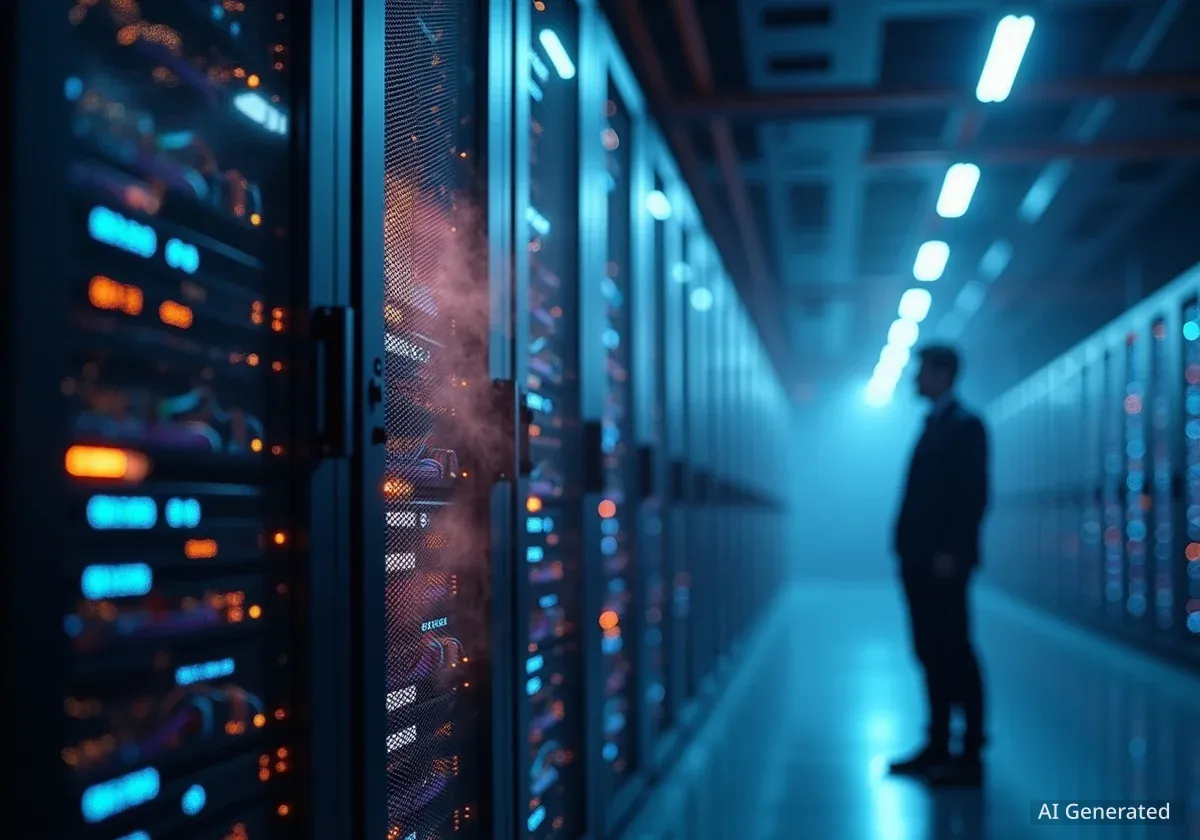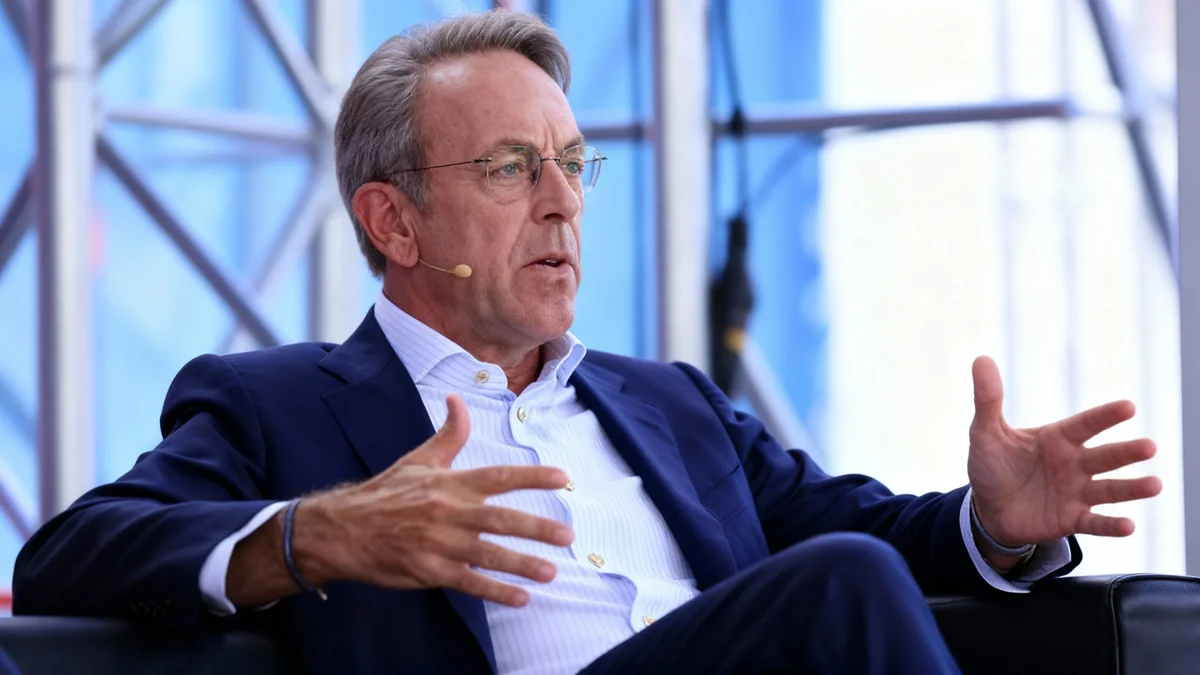The financial viability of artificial intelligence (AI) data centers is under scrutiny following an updated analysis by hedge fund founder Harris "Kuppy" Kupperman. His initial assessment in August highlighted the rapid depreciation of data center components, questioning their long-term profitability. After further discussions with industry professionals, Kupperman now suggests the situation may be even more challenging than first predicted, indicating a significant disconnect between current investment and potential returns.
Key Takeaways
- AI data centers face rapid component obsolescence and wear.
- Initial profitability estimates may have been too optimistic.
- Depreciation period for data center components is shorter than expected.
- Projected revenue needed to break even far exceeds current industry figures.
- Industry experts express confusion over financial models.
Initial Skepticism and Industry Feedback
Harris Kupperman, founder of Praetorian Capital, first raised concerns about the economics of AI data centers in an essay published in August. He compared the expensive semiconductor chips powering these centers to "shovels" in an AI gold rush. However, his calculations suggested that these centers had a very limited timeframe to become profitable.
According to Kupperman, data center components quickly become outdated due to rapid technological advancements. They also degrade from constant, high-powered operation. This combination creates a significant financial hurdle.
"I clearly hit a nerve in the industry, when judging by the number of individuals who reached out to chat," Kupperman stated in a follow-up blog post. "In total, I’ve spoken with over two-dozen rather senior people in the datacenter universe, and there was an interesting and overriding theme to our conversations; no one understands how the financial math is supposed to work. They are as baffled as I am, and they do this for a living."
Fact Check
Morningstar reported that Kupperman's initial findings generated considerable feedback from anxious professionals within the data center sector. This feedback led him to revise his financial outlook, making it even more pessimistic.
Revised Depreciation and Revenue Projections
Kupperman's initial analysis assumed a ten-year depreciation curve for AI data center components. He considered this period problematic for achieving a return on investment.
However, conversations with industry experts revealed this ten-year estimate was overly generous. The actual lifespan of physical data center components is much shorter.
Shorter Lifespan for AI Hardware
"I had previously assumed a 10-year depreciation curve, which I now recognize as quite unrealistic based upon the speed with which AI datacenter technology is advancing," Kupperman wrote. "Based on my conversations over the past month, the physical data centers last for three to ten years, at most." This significantly shorter operational life amplifies the financial challenge.
The rapid evolution of AI technology means that hardware can become obsolete even before it physically breaks down. This technological obsolescence requires frequent upgrades, adding to capital expenditure.
Context: The AI Gold Rush
The term "AI gold rush" describes the intense investment and competition in artificial intelligence technologies. Companies are pouring billions into developing AI models and the infrastructure to support them, hoping for substantial future returns. Data centers are a crucial part of this infrastructure, housing the powerful processors needed for AI workloads.
The Growing Revenue Gap
In his original assessment, Kupperman estimated that the tech industry would need approximately $160 billion in revenue to break even on data center spending in 2025 alone. This calculation assumed a generous 25 percent gross margin.
However, the industry's actual AI revenue is currently closer to $20 billion annually. This creates an enormous disparity between investment and earnings.
Escalating Break-Even Point
With revised depreciation schedules and ongoing capital expenditures, the required revenue for profitability has increased dramatically. Kupperman's updated figures paint a more concerning picture.
"In reality, the industry probably needs a revenue range that is closer to the $320 billion to $480 billion range, just to break even on the capex to be spent this year," Kupperman stated in his updated essay. This revised figure is significantly higher than his earlier estimate and vastly exceeds current revenue levels.
- Original 2025 Break-Even Revenue Estimate: $160 billion
- Current Annual AI Revenue: ~$20 billion
- Revised 2025 Break-Even Revenue Estimate: $320 billion to $480 billion
Future Projections and Economic Impact
The financial challenges are not limited to 2025. The industry plans for hundreds of new data centers to become operational in 2026. This expansion will require even more capital investment.
Kupperman warns that combining the spending for both years magnifies the problem. The required revenue to simply break even would reach unprecedented levels.
Projected Revenue for 2025-2026
To break even on capital expenditure for both 2025 and 2026, the industry would need approximately $1 trillion in revenue. Achieving an acceptable return on this investment would require "many trillions more."
The scale of investment versus the potential for returns suggests a significant financial imbalance. This situation raises questions about the sustainability of the current AI data center boom.
"If the economics don’t work, doing it at massive scale doesn’t make the economics work any better — it just takes an industry crisis and makes it into a national economic crisis," Kupperman concluded. This statement underscores the potential for wider economic consequences if the financial models do not improve.
Many observers now agree that the AI sector might be significantly overhyped. The central question is no longer if a market correction will occur, but when. The current trajectory suggests a potential for significant financial instability within the industry.





